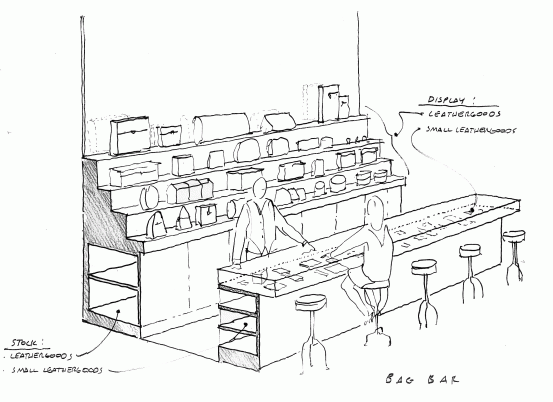The brief was to create the first entirely customized Louis Vuitton building and store free from the “concept store” approach that repeats itself globally. Eric Carlson in collaboration with the Italian Architect Aurelio Clementi formulated a contextual respond specific to the mega-urban redevelopment of Roppongi Hills and to the “night-life” culture for which the neighborhood is historically renown. Facing a large urban plaza, the facade is conceived as a giant 13 x 36 meter pixelized screen of 30,000 glass tubes stacked in a honeycomb-like manner visually creating a perpetual “mirage effect” filtering the natural light and blurring views to the interior.
To unify and spatially structure the irregular shaped interior, the central space is wrapped in a “skin” of interlocking polished and brushed stainless steel rings assembled in pattern derived from the circles, diamonds and flowers found in the LV monogram motif. Avoiding the typical response of creating a fixed architectural design that imprisons the constantly changing nature of fashion, the two level 900m² store interior is conceived as a multifaceted architectural instrument adapting to the changing seasonal rhythms. A virtual laboratory of innovation, merchandising display techniques, store operations, and the “selling ceremony” are reinvented and designs for the famous “Bags-Bar” and “Luggage-Lounge are inaugurated.












